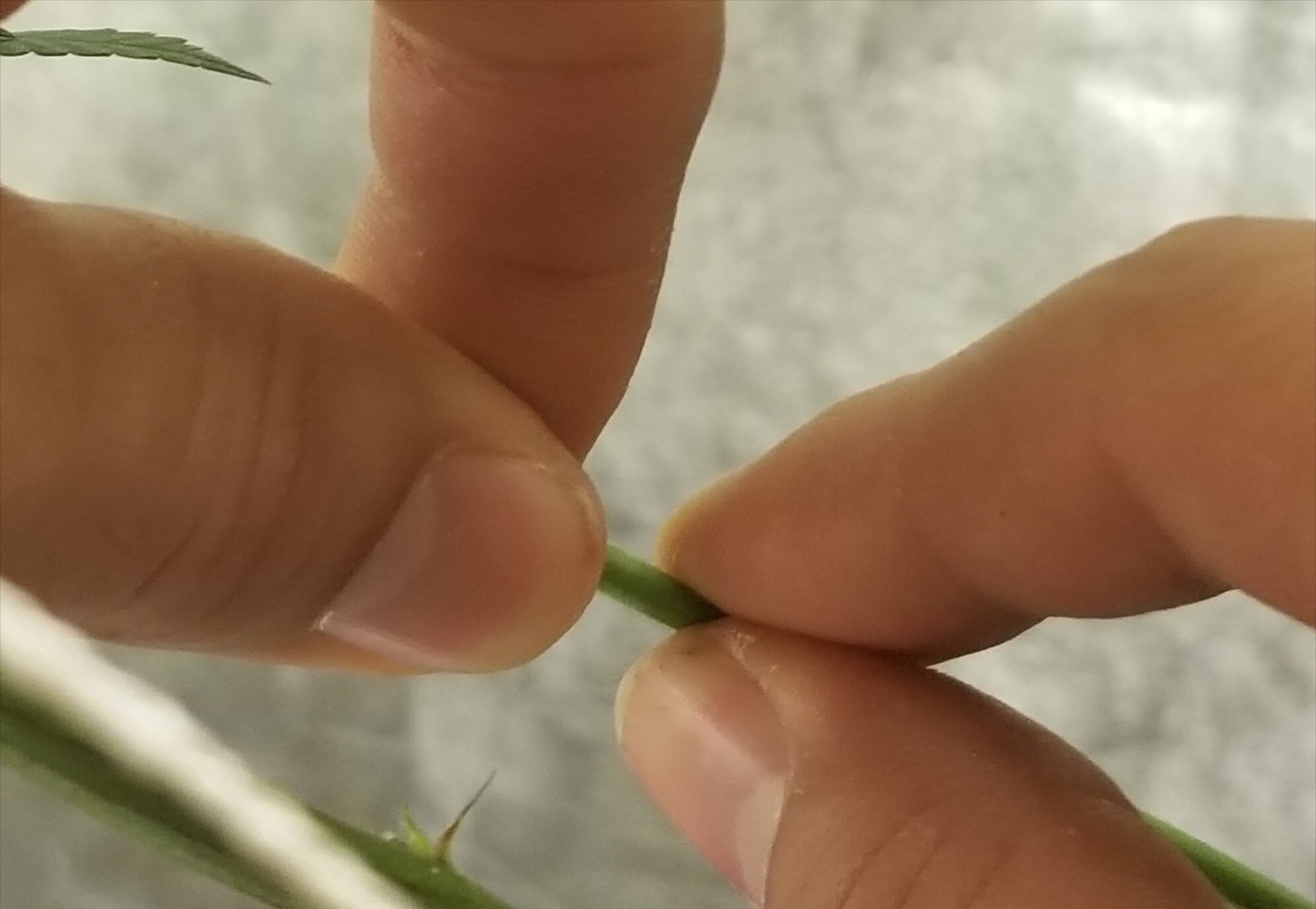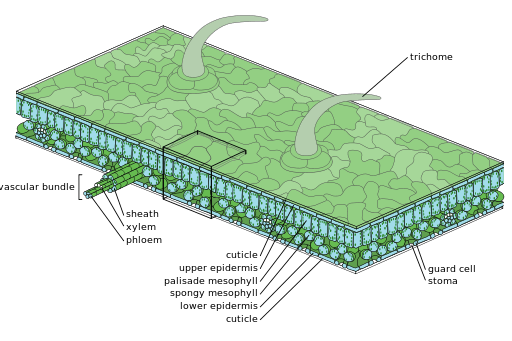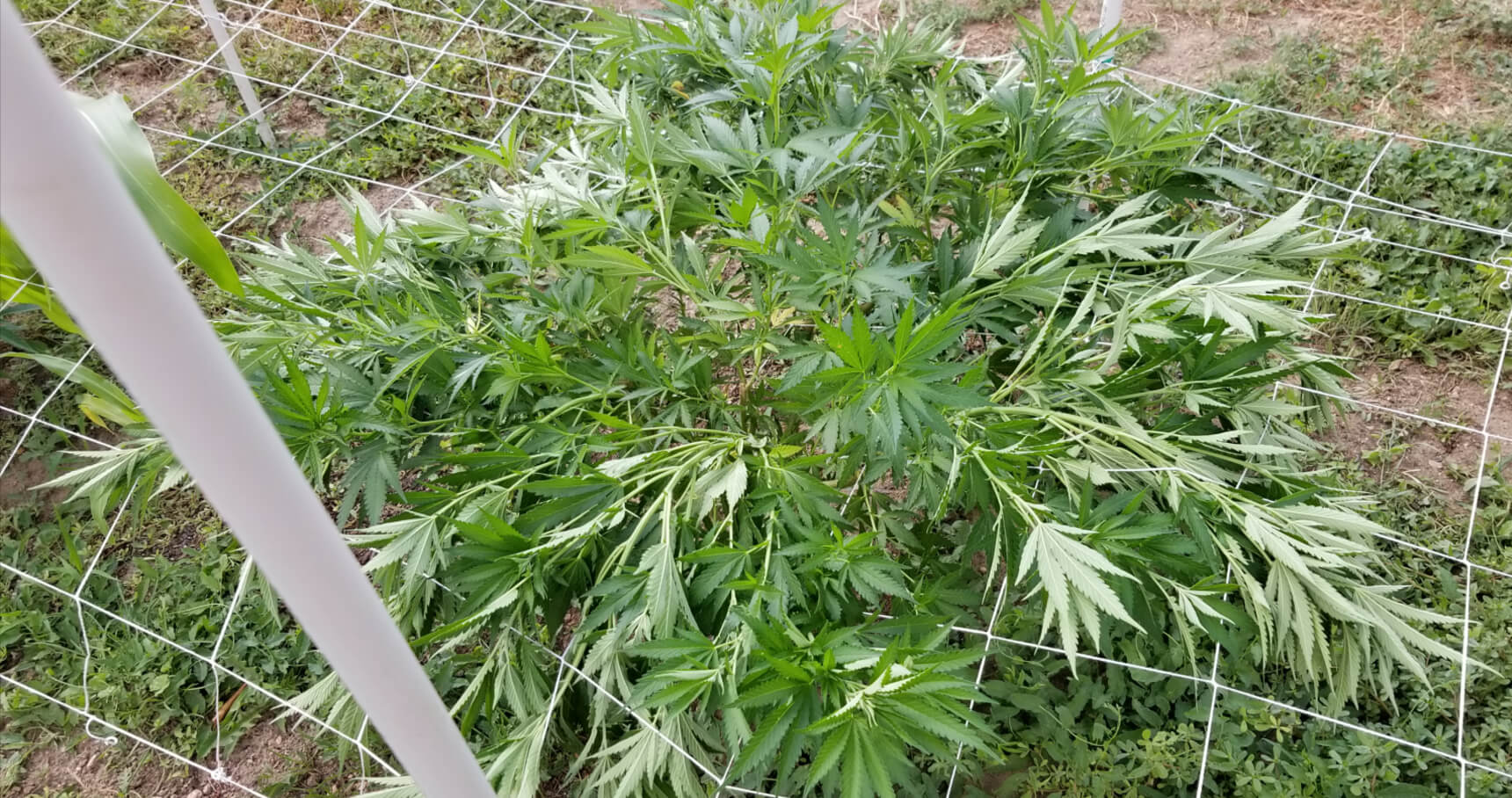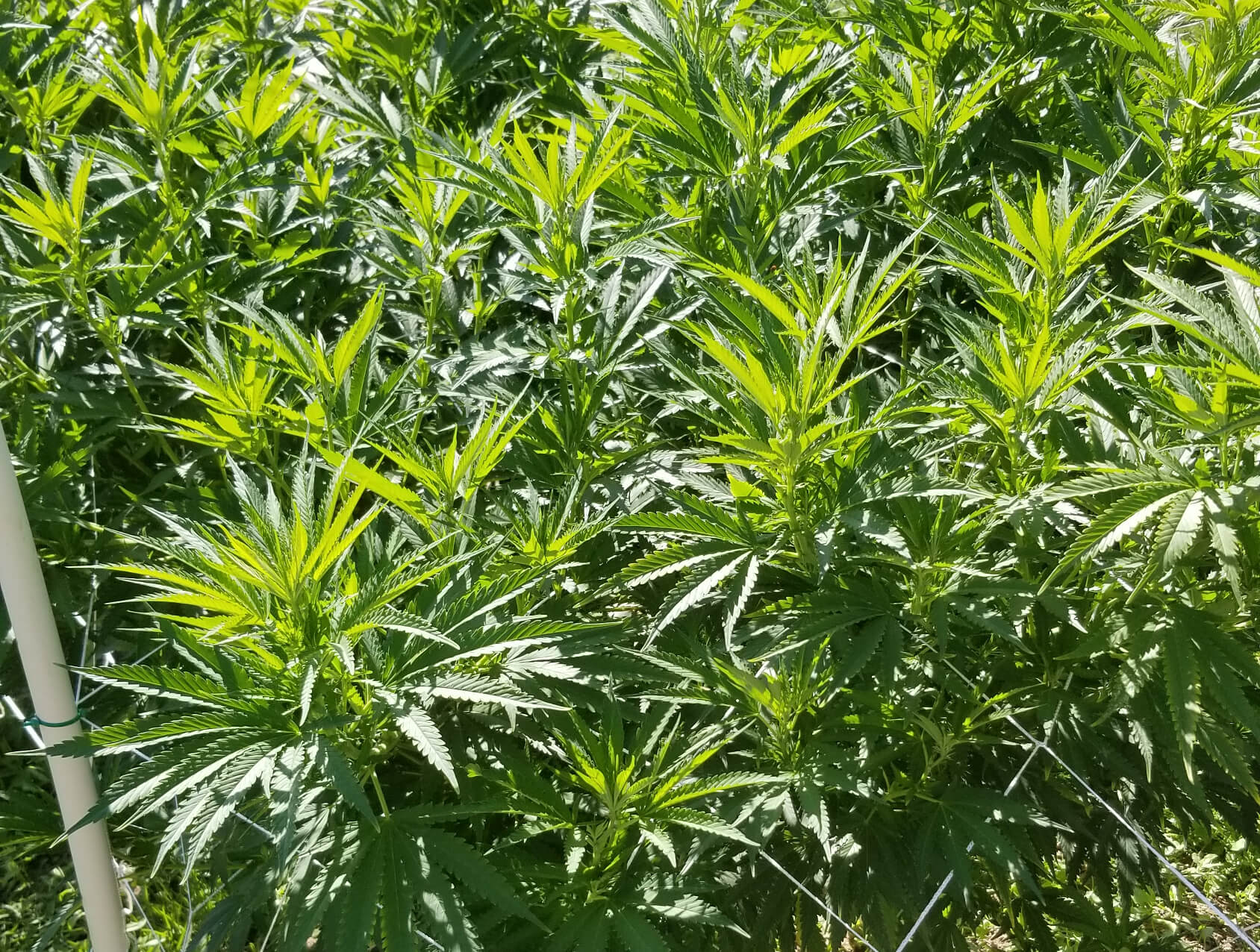- Supercropping
- Avoid Bending Branches
- Pinching & Twisting
Supercropping is a high-stress training method that can increase yield by optimizing your grow space with a limited plant count in early flower. This method pairs well with trellising your plants as it provides the necessary structure and support. In my opinion, supercropping in the vegetative stage should be avoided as plants are less able to support themselves after this training method which is why trellis is crucial for support. Also, the trellis aids in the spreading of your canopy which is your intention in the flower stage while in the vegetative stage I prefer to keep my canopy smaller to fit more plants in a given space. As the plants grow taller, these branches provide a better foundation for the plant’s canopy when they are spread out through the trellis. This is a matter of personal preference and the needs of your garden. You should try to see what works best for your scenario. Depending on how you are growing your cannabis that will help you decide what steps are best to take to optimize your yields and train your plants.
Supercropping
Older branches will be more difficult to bend than supercropping, with that being said cannabis plants stretch in early flower before producing buds and this is a key time to trellis and supercrop plants. When looking at your cannabis plants to train in early flower you should be imagining how the canopy will look after the training is applied. Visualize how it may appear depending on where you set trellis so that plants do not overlap when you are finished.
Avoid Bending Branches
The supercropping method must be applied properly. There are many individuals who claim that bending your branches close to a 90° degree angle is a good idea, but I highly recommend against this variation of the method as you can easily cut off the flow of nutrients and water to branches by bending them. Not to mention this is a really fast way to break or injure some branches. If you find this method works for you then by all means, but I would recommend giving another variation of the supercropping method a try because it could dramatically reduce valuable recovery time for your cannabis plants.
Pinching & Twisting
My preferred variation of the supercropping method is to slightly pinch & twist the stem in opposing directions with both the thumb and index finger of both hands. You may hear a faint popping noise which is good. Follow along the same stem and twist at a few different sections.

This allows you to break down the rigidity of the epidermis of the plant to be able to bend the branch safely without fear of cutting off any flow of nutrients or water. Make sure to not overdo it as a little pinching & twisting goes a long way. Now that the plant stem is easily bendable you can weave it through the trellis for support without ever having to bend the stem at a 90° degree angle. This will avoid knuckling in many cases which means your plant will not waste much time trying to recover.

The younger, newer growth is preferred to work with which is why it is crucial to supercrop your plants after trellis at the early flower stage because the stems will harden over time. I recommend starting on a branch you do not mind messing up on until you become more comfortable with this method. If you happen to make a mistake you can always use plant tie to secure the branch back together. After immediately supercropping your cannabis plants you will notice that they seem unsupported besides the support of the trellis.

This is only temporary as the plant will work to support itself again more or less depending on the strain and as the canopy is opened the plant stems will be more exposed to light providing larger yields. Different strains of cannabis have different tolerances for structural training and will have varying degrees of support naturally. Taller plants will benefit more from supercropping as their canopy can be expanded outwards even further with a more even canopy height. Suppercropping is not the only viable training method for cannabis plants and it may not work for your garden, it is important to find what training works best depending on plant count issues, cannabis plant height, and equipment to properly fix a trellis across the canopy.

Resources:
- Zephyris (2011). Leaf Structure Image. Wikimedia Commons. CC BY-SA 3.0. Retrieved from https://commons.wikimedia.org/wiki/File:Leaf_Structure.svg.
Comments powered by Talkyard.